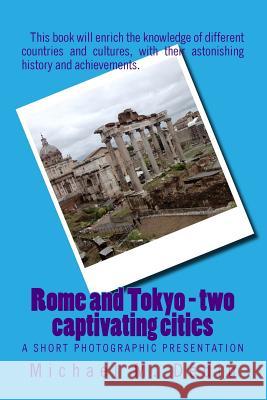Rome and Tokyo - two captivating cities: A short photographic presentation » książka
Rome and Tokyo - two captivating cities: A short photographic presentation
ISBN-13: 9781939757067 / Angielski / Miękka / 2013 / 120 str.
Rome exists for over 2,500 glorious years, and the ancient Romans built massive concrete structures that have withstood the elements for more than 2,000 years. Recently specialists analyzed samples from a Roman breakwater that has been submerged in the Bay of Napoli (Naples) for over two millennia, and they observed the technique of crystal chemistry that allowed Roman seawater concrete to resist chemical attack and wave action for all this time. It was noted that the manufacture of extremely durable Roman maritime concrete released much less carbon than most modern concrete does these days. Some Roman roads are still in use, and we also celebrated the 1900 years anniversary of Columna Traiani (Trajan's Column), built in 113 AD. Tokyo started around 1150 as a small fishing village named Edo (which means estuary). Between 1603 and 1868 (Edo period), the city Edo developed into one of the biggest cities in the world, with a population of over one million by 1700. Its name was changed to Tokyo (east capital) when it became the imperial capital in 1868. Now the population of the main city is over 9 million people; with the closest suburbs the total population exceeds 13 millions, and Tokyo is the world's most populous metropolitan area, with circa 35 million people. Tokyo also is the world's largest urban cluster economy, with a GDP of over $1.4 trillion. The tallest structure in Tokyo is Tokyo Skytree, a lattice tower, which is 634 m. The over 190 photos, taken between 2008 and 2011, show a delightful variety of images of very interesting places from these so extraordinary cities. This book will enrich the knowledge of different countries and cultures, with their astonishing history and achievements, and will create a better understanding of our treasured planet.











